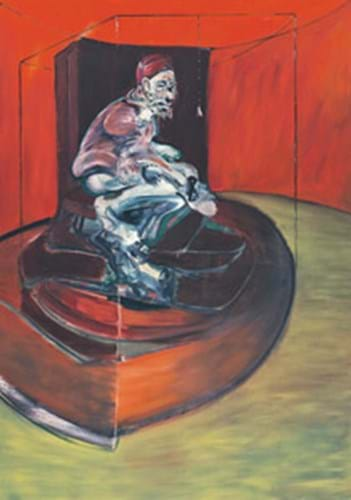
How much bigger can the numbers get? This was the multimillion dollar question being posed by the latest round of record-smashing sales of Contemporary art in New York.
Last week Sotheby's and Christie's took an unprecedented combined premium-inclusive total of $823m at their Contemporary art auctions, $200m more than the previous week's Impressionist & Modern sales. Contemporary art is now firmly established as the dominant force in the great 21st century global art boom.
The $385m (£192.5m) total achieved at Christie's Part I Contemporary sale on May 16 was a record for the category, beating the previous high of $256m (£128m) set the previous evening at Sotheby's.
Christie's total also represented the second most expensive auction in history after their own landmark $491.5m 'Bloch-Bauer' Impressionist and Modern sale in November. Sixty-five of the 78 works in Christie's evening Contemporary auction fetched over $1m and only four failed to sell.
With roubles now appearing for the first time on Sotheby's currency convertors, the auctioneers were keen to stress the global diversity of the buyers. At Christie's over half the lots were sold to non-Americans with 19% going to Europe, 18% to Asia and 16% to 'other' (which includes the Middle East).
The scale of the financial stakes now involved in the ruthlessly competitive market for contemporary art were dramatically highlighted by the record $65m (£32.5m) paid at Sotheby's by a mysterious 'bearded man in a skybox' for Mark Rothko's monumental 1950 abstract, White Center (Yellow, Pink, Lavender on Rose). The price was a record for any Contemporary work of art sold at auction.
Sotheby's were rumoured to have given the vendor David Rockefeller a guarantee of $46m, plus a sizeable chunk (if not all) of the buyer's premium. Sotheby's main income from the sale would have been a share of the $19m 'upside' between the guarantee and the final price of $65m.
Another significant result at Sotheby's was the $47m (£23.5m) paid by an anoymous telephone buyer for Francis Bacon's 1962 Study for Innocent X, almost doubling the previous record of £12.5m for the artist set in February in London.
Andy Warhol and Damien Hirst were among no fewer than 26 artists to reach new highs at Christie's the following evening. Warhol's grisly but iconic 1963 Green Car Crash (Green Burning Car I) became the second most expensive Contemporary work of art ever sold at auction when it was knocked down to an Asian telephone bidder at a colossal double-estimate $64m (£32m).
Damien Hirst's 6ft high 'pill cabinet' piece, Lullaby Winter, dating from 2002, also almost doubled its upper estimate when it sold for $6.6m (£3.3m).
Perhaps most remarkably, both houses' 'secondary' daytime sales took around $90m each.
"Money has no meaning…the whole marketplace is crazy," New York dealer Angela Westwater of Sperone Westwater told reporters at Sotheby's sale.
Seasoned observers of the Contemporary market might find current prices crazy. But as values continue to rise, and more of the world's multimillionaires, billionaires and fund managers view art as a lucrative alternative asset class, prepare for even more craziness.
By Scott Reyburn




